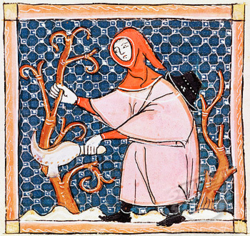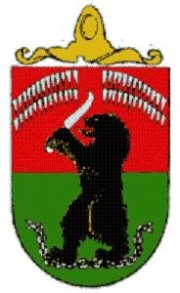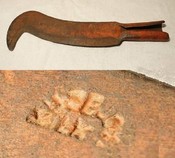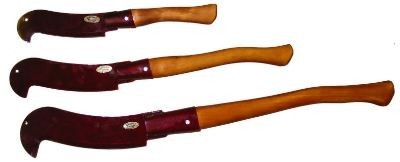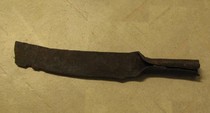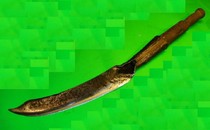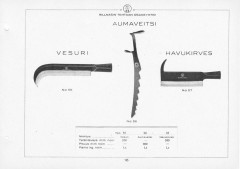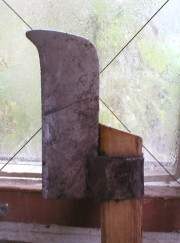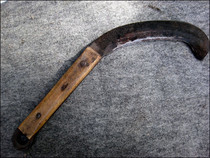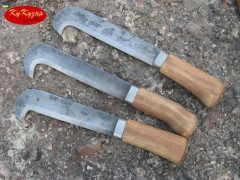Billhooks of Northern Europe
The billhook is common in most Scandinavian countries. I have examples from Sweden and Finland, but not yet from Norway or Denmark. It is also known in the Baltic States (Estonia, Latvia and Lithunaia) also in Russia and the Ukraine. The Russian/Finland border state of Karelia (renowned for its wooden buildings) had a bear holding a billhook on its national flag.
The old (mid 20th century) flag of Karelia. The bear is holding a tyical Finnish 'vesuri' or billhook, having cut its chains of bondage to Russia. (the current flag of Russian Karelia just shows the bear, without his billhook). The images above the bear represent the northern lights (Aurora Borealis) but to me look like rows of billhooks.......
In Finland there are three patterns of billhook, and regional variations in shape of these. The most common is the open socketted 'vesuri', which although having a longer blade, is typical of a type found throughout much of Europe, and is similar to those from the Iron Age in Britain, and currently still found in Spain, Morocco and Turkey.
A small 'kassara' with a tanged curly birch handle (image copyright: Lapin metsämuseo - the Lapland Forestry Museum).
A modern Finnish 'vesuri', the blade is made of stamped steel with a closed socket welded to it. This pattern is common today, and is still made by several manufacturers. This one is probably a Marttiini, although they have now stopped making them, and concentrate on making Suomi Finnish knives. The yellow object is a plastic blade guard.
The above range of 'vesureita' is from a small family firm, Härmän Täonta Oy - this model is currently being imported into the USA by Kellam Knives. Until recently they make a wider range of other tools, including 'kassara' and 'havurauta'.
Another style of 'hakokirves' (possibly also 'hakukirves' which literally translated to retreiving axe). This shape of blade is also found in Germany and Austria... This one has a cranked, tanged handle, not the more common socket fitting. The smaller models were used for cutting bedding, e.g. pine branches, or fodder for cattle
Below some more images of hakokirves, mainly from collections in Finnish mueums - both with and without hooks, the method of manufacture varies considerably.
Modern Ukranian billhooks by blacksmith, Volodymyr (Vladimir) Kukuznia made for re-enactment, but to a local pattern.
